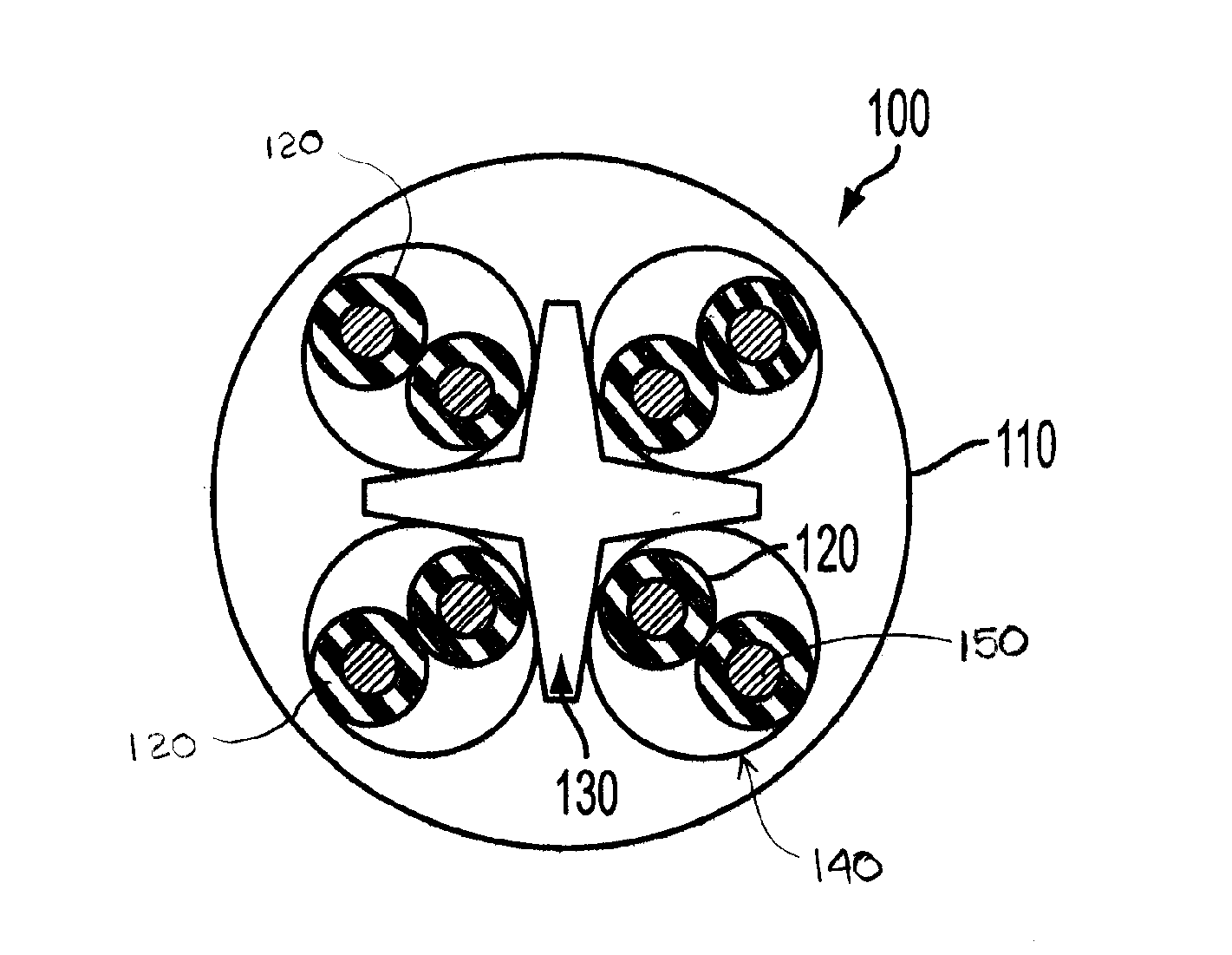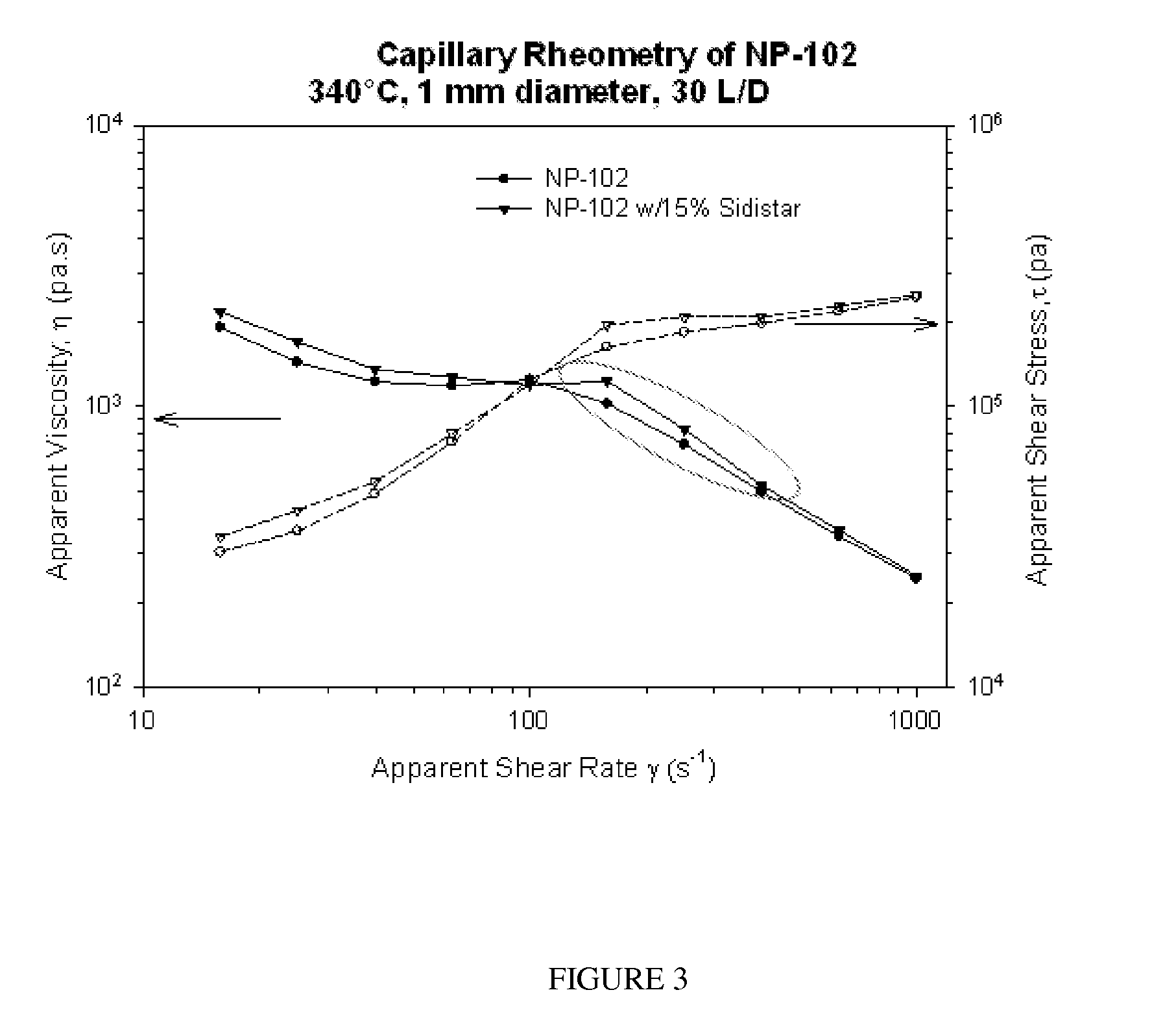Insulation with micro oxide particles
- Summary
- Abstract
- Description
- Claims
- Application Information
AI Technical Summary
Benefits of technology
Problems solved by technology
Method used
Image
Examples
Embodiment Construction
[0016]Referring to FIGS. 1 and 2, the present invention generally relates to a composite insulation for cable and its components that includes added non-porous micro oxide particles to improve the flame retardancy and electrical performance characteristics of the cable while also reducing costs. For example, with the addition of the non-porous micro oxide particles to the insulation, the insulation has (a) a decreased melt flow rate that contributes to a reduction in dripping, i.e. the melt flow index is decreased by up to about 100%, preferably about 3-50%, thereby decreasing the risk of flame spread and exhibiting less smoke when exposed to flame; (b) an increased dielectric constant by about 2-50%, and preferably 3-30%, thereby refining electrical performance; (c) an increased viscosity by 3-100%, preferably by about 3-30%, which improves and simplifies extruding; (d) preferably about 30-100% less transparency so that less, if any, coloring agent is required, to make the insulati...
PUM
 Login to View More
Login to View More Abstract
Description
Claims
Application Information
 Login to View More
Login to View More - R&D
- Intellectual Property
- Life Sciences
- Materials
- Tech Scout
- Unparalleled Data Quality
- Higher Quality Content
- 60% Fewer Hallucinations
Browse by: Latest US Patents, China's latest patents, Technical Efficacy Thesaurus, Application Domain, Technology Topic, Popular Technical Reports.
© 2025 PatSnap. All rights reserved.Legal|Privacy policy|Modern Slavery Act Transparency Statement|Sitemap|About US| Contact US: help@patsnap.com



